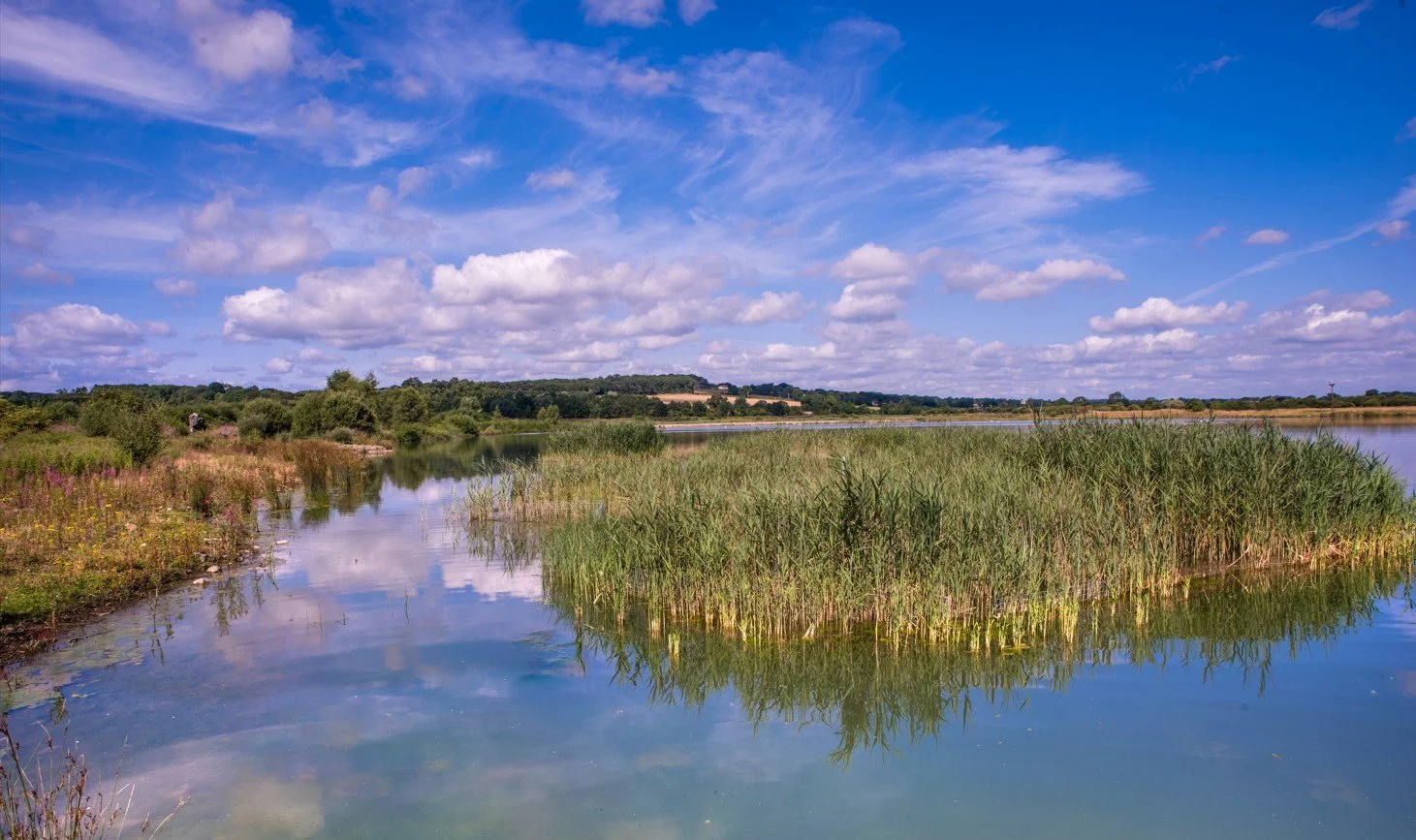Yorkshire Water Biodiversity Fund II
Expanding priority habitats & building partnerships in the Lower Ure valley
We have recently received additional funding from the Yorkshire Water Biodiversity Fund for continuing our work on expanding priority wetland habitats in the Lower Ure Valley.
Through this project we aim to deliver even more positive benefits for priority habitats and species, continuing our practical focus on propagating local-provenance wetland plants. As our experience grows, this is not just for our own restoration efforts but will also supply excess plants to other key wildlife sites in North Yorkshire.
We aim to improve the ecological resilience of rivers and river catchments in Yorkshire, sharing the learning from trialling new methods for wetland plant propagation and habitat restoration. We plan to initiate a Lower Ure Partnership to collate existing ecological information and identify opportunities.
We also want to introduce more people to the fascinating story of the lower River Ure and surrounding area – through hosting events and activities to tell the story of the river and the history of the landscape.
Project Updates
Click on the links below to read our progress updates:
Magnesian Limestone Grassland survey
As part of this project, we are trying to identify areas of magnesian limestone grassland in the Lower Ure Valley.
Magnesian limestone grassland is one of North Yorkshire’s rarest habitats, but we need to find out more about where it survives. A few well-known sites like Burton Leonard Limekilns are protected as nature reserves, but small remnants occur also on green lanes, roadsides, churchyards and old railway lines. Identifying these sites could help us restore and reconnect this vanishing habitat.
Magnesian limestone grassland can be identified by the presence of lime-loving plants such as Cowslip, Field Scabious and Lady’s Bedstraw.
We are asking people to look out for any patches of magnesian limestone grassland within the survey area by identifying indicator plant species.
The survey area
The magnesian limestone runs in a narrow ridge roughly parallel to the A1. The area around the Lower Ure Valley extends from Flaxby to Knaresborough in the south in a narrow ribbon to Catterick and Colburn in the north – but we’re still interested in sites just outside this area.
This map is based on the British Geological survey base map. The magnesian limestone and associated strata are outlined in red.
We’re interested in sites which have two or more of the plants listed below. You don’t need to fill in a form but please tell us:
The location (e.g. Ordnance Survey grid reference, What3Words) – if it’s a linear feature such as an old railway line, it’s helpful if you can identify where the interest starts and finishes.
A sketch map would be useful
What plants you saw
Any issues such as scrub encroachment which may be threatening the grassland flora
Please email your findings to: emma.higgs@luct.org.uk
Please don’t enter private land without permission from the land owner, other than on public rights of way.
Take great care where you park and walk if you’re looking at road verges.
You can watch our webinar on magnesian limestone grassland here. Ecologist Martin Hammond takes us through the history & geology of the magnesian limestone ridge. We look at it's ecology, the indicator plant species associated with it, the threats it faces and what you can do to help.
MAGNESIAN LIMESTONE INDICATOR SPECIES
Basil-thyme Clinopodium acinos
Bee Orchid Ophrys apifera
Betony Betonica officinalis
Blue Fleabane Erigeron acer
Burnet Rose Rosa spinossissima
Burnet Saxifrage Pimpinella saxifraga
Carline Thistle Carlina vulgaris
Clustered Bellflower Campanula glomerata
Common Bird's-foot Trefoil Lotus corniculatus
Common Rockrose Helianthemum nummlarium
Cowslip Primula veris
Crested Hair-grass Koeleria macrantha
Downy Oat-grass Avenula pubescens
Dropwort Filipendula vulgaris
Dyer's Greenweed Genista tinctoria
Field Scabious Knautia arvensis
Glaucous Sedge Carex flacca
Greater Knapweed Centaurea scabiosa
Harebell Campanula rotundifolia
Hoary Plantain Plantago media
Lady's Bedstraw Galium verum
Meadow Oat-grass Avenula pratensis
Mouse-ear Hawkweed Pilosella officinarum
Oxeye Daisy Leucanthemum vulgare
Ploughman's Spikenard Inula conyzae
Pyramidal Orchid Anacamptis pyramidalis
Quaking-grass Briza media
Restharrow Ononis repens
Rough Hawkbit Leontondon hispidus
Salad Burnet Poterium sanguisorba
Saw-wort Serratula tinctoria
Sheep's Fescue Festuca ovina
Small Scabious Scabiosa columbaria
Spring Sedge Carex caryophyllea
Thistle Broomrape Orobanche reticulata
Tor-grass Brachypodium rupestre
Upright Brome Bromus erectus
Viper's Bugloss Echium vulgare
Wild Basil Clinopodium vulgare
Wild Carrot Daucus carrota
Wild Marjoram Origanum vulgare
Wild Thyme Thymus drucei




